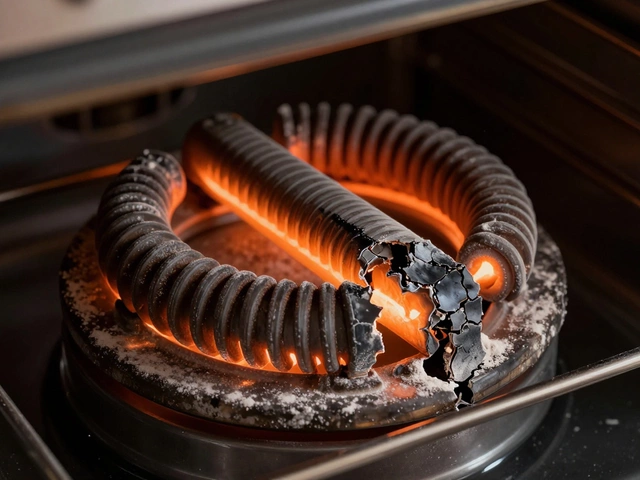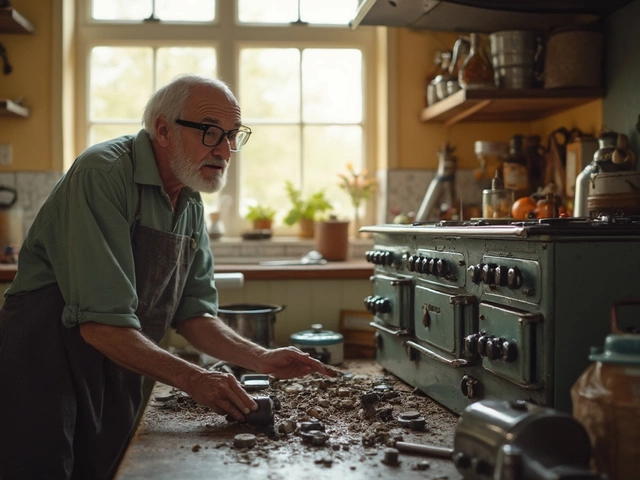If your fridge is humming but the food is still warm, you’re probably wondering what went wrong. The good news is most cooling issues have an easy fix, and you don’t always need to call a technician. Below you’ll find the most common reasons a fridge stops cooling, quick DIY checks, and clear signs when a pro should step in.
First, understand what makes a fridge cold. A compressor pushes refrigerant through coils, while a thermostat tells the system when to turn on. If any part of that chain fails, the temperature rises. The most frequent culprits are:
These issues are easy to spot with a few quick checks, saving you time and a call‑out fee.
1. Clean the condenser coils. Unplug the fridge, pull it away from the wall, and use a vacuum brush or a coil‑cleaning brush to remove dust. A clean coil can improve cooling by up to 30%.
2. Check the door seal. Close a dollar bill inside the door. If it slides out easily, the gasket is worn. Replacing a gasket costs less than £30 and restores a tight seal.
3. Clear the vents. Look inside the fridge and freezer for any ice blockage or items that block the vents. Let frozen piles melt, then rearrange food so air can move freely.
4. Test the fan. Listen for a soft whirring sound when the door opens. If you hear nothing, the fan may be stuck or broken. A simple fan replacement is often under £50.
5. Reset the thermostat. Locate the control dial or digital panel, turn it to the coolest setting, wait a few minutes, then set it back to your usual temperature. This can kick‑start the compressor.
If after these steps the fridge is still warm, it’s time to call in a professional. A trained technician can check the compressor, refrigerant levels, and electrical components safely.
When you reach out to a repair service, mention the steps you’ve already taken. That lets them focus on the real problem and may reduce the labour cost. At Bognor Regis Appliance Repair Experts we love a good DIY story, but we also know when a job needs a specialist’s touch.
Keeping a fridge in top shape is mostly about regular maintenance. Wipe the coils every six months, clean the door gasket, and don’t overload the shelves. A little attention now prevents a big, costly breakdown later.
Got a fridge that still won’t cool after trying these fixes? Give us a call. We’ll diagnose the issue fast and get your food back to safe temperatures without any hassle.

A practical guide for diagnosing common refrigerator problems, spotting signs of faults, and fixing them at home with tips and real-world facts.

Wondering how long your water heater should last? This article dives into the expected lifespan of various types of water heaters, factors impacting their longevity, and signs it might be time for a replacement. With practical tips on maintenance, you can extend the life of your heater and avoid breakdowns. Learn what to watch out for to ensure you have hot water when you need it, without unexpected surprises.

Learn how to tell if your oven element is blown by checking for visible damage, testing with a multimeter, and observing oven behavior. Most oven heating issues are simple fixes.

Wondering if your 20-year-old oven can be repaired? Discover repair tips, replacement part insights, costs, and when it makes sense to swap your old oven for a new one.

Navigating the cost of a new boiler can be confusing. This guide dives into typical pricing, key considerations for your budget, and how to make the best decision for your home. We'll explore average costs, the impact of brands and models, and provide tips for saving money. Get the information you need to keep your home warm without breaking the bank.

Thinking of how long your gas hob will last? Dive into the expected lifespan of gas hobs, factors that affect their longevity, and simple maintenance tips. Discover how regular care can stretch your appliance's life and understand when it's time to consider repair or replacement. Make informed decisions to keep your culinary adventures flaming well.